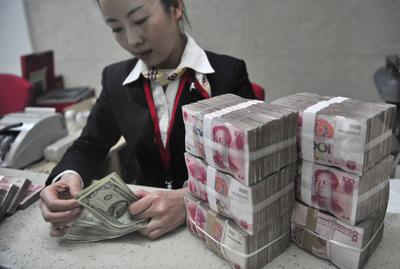After President Hu Jintao’s visit to the US last week, a flexible Chinese RMB looks a less distant, and more daunting, prospect than it might have seemed to American critics, especially if it is tied to Beijing’s plans for the RMB’s emergence as a world currency.
Not that Hu announced an appreciation of the Chinese currency or any immediate or managed solution to the immediate dispute over its valuation with his American counterparts. That was never on the cards. But what has happened in the lead-up to his visit was something that might ultimately be much more important in developing a Chinese exchange rate regime in which the RMB can more readily float to its proper market rate and assume a more important place in the global monetary system.
As Barry Eichengreen discusses in this week’s lead essay Beijing’s decision, in the lead-up to Hu’s visit, to allow the state-controlled Bank of China to offer RMB-denominated bank accounts and currency conversion services in New York is as an important step in positioning the RMB to become a true international currency. It’s not just a publicity stunt designed to deflect attention away from China’s refusal to let its currency appreciate against the dollar: it is another small but significant step, as Eichengreen observes, in the internationalisation of the RMB, even if President Hu’s visit may have explained the timing of it.
‘There has been an important shift in Chinese strategy and rhetoric since March 2009 when People’s Bank of China Governor Zhou made some much-commented-on remarks calling for an enhanced role for the IMF’s Special Drawing Rights, or SDRs, as an alternative to the dollar in the international sphere’, Eichengreen argues. ‘Chinese officials speak now not of an international monetary system centred on SDRs (or the US dollar) but on a system that rests on a handful of existing currencies: the dollar, the euro, and the renminbi.’ China now gives every sign of resolutely moving to put the new international currency order in place.
In the joint Press Statement after the Hu-Obama talks, on currencies, the United States and China agreed ‘that currencies in the SDR basket should only be those that are heavily used in international trade and financial transactions’, and the United States supported China’s efforts over time to promote inclusion of the RMB in the SDR basket.
Eichengreen notes that ‘China still has a long way to go in order to internationalise the RMB. It will have to make its financial markets at home more liquid. To create a bond market of the requisite size, it will have to “overfund” its debt, issuing more sovereign debt securities than would be necessary otherwise. To gain the confidence of foreign investors, it will have to make its financial markets more transparent and strengthen rule of law. To accommodate a larger volume of capital inflows and outflows, it will need a more flexible exchange rate. Above all, it will have to avoid serious financial problems.’
As Takatoshi Ito finds in his Asian Economic Policy Review paper last year (see also the relevant appendix), according to the basket currency regressions during the period in which the Chinese currency was gradually appreciating against the US dollar from July 2005 to August 2008, the RMB had already acquired strong influence on the Asian currencies. The weight of the RMB turns out to have been higher than that of the US dollar in the Singapore dollar basket. The RMB is fast gaining the status it needs to be a regional anchor currency and for a float.
While many central banks have not yet acquired RMB denominated assets as foreign reserves, China has made a decision to promote RMB denominated cross-border transactions. As capital controls are lifted, transactions of assets denominated in the RMB will increase. Although the RMB may still have a long way to go in challenging the US dollar and the Euro as key reserve currencies, the process toward at least becoming a regional key currency, and eventually an international key currency, has begun.


I agree with Prof.Drysdale’s comment on the importance of BoC NY playing as a platform of RMB business. It should be a part of the grand strategy for the RMB internationalization. However, the strategy of first establishing an off-shore center in Hong Kong may prove to be a risky ‘drug’ to alleviate pressure to reform and open domestic markets, resulting in unexpected delay in achieving the target of becoming one of tripatite world currencies.